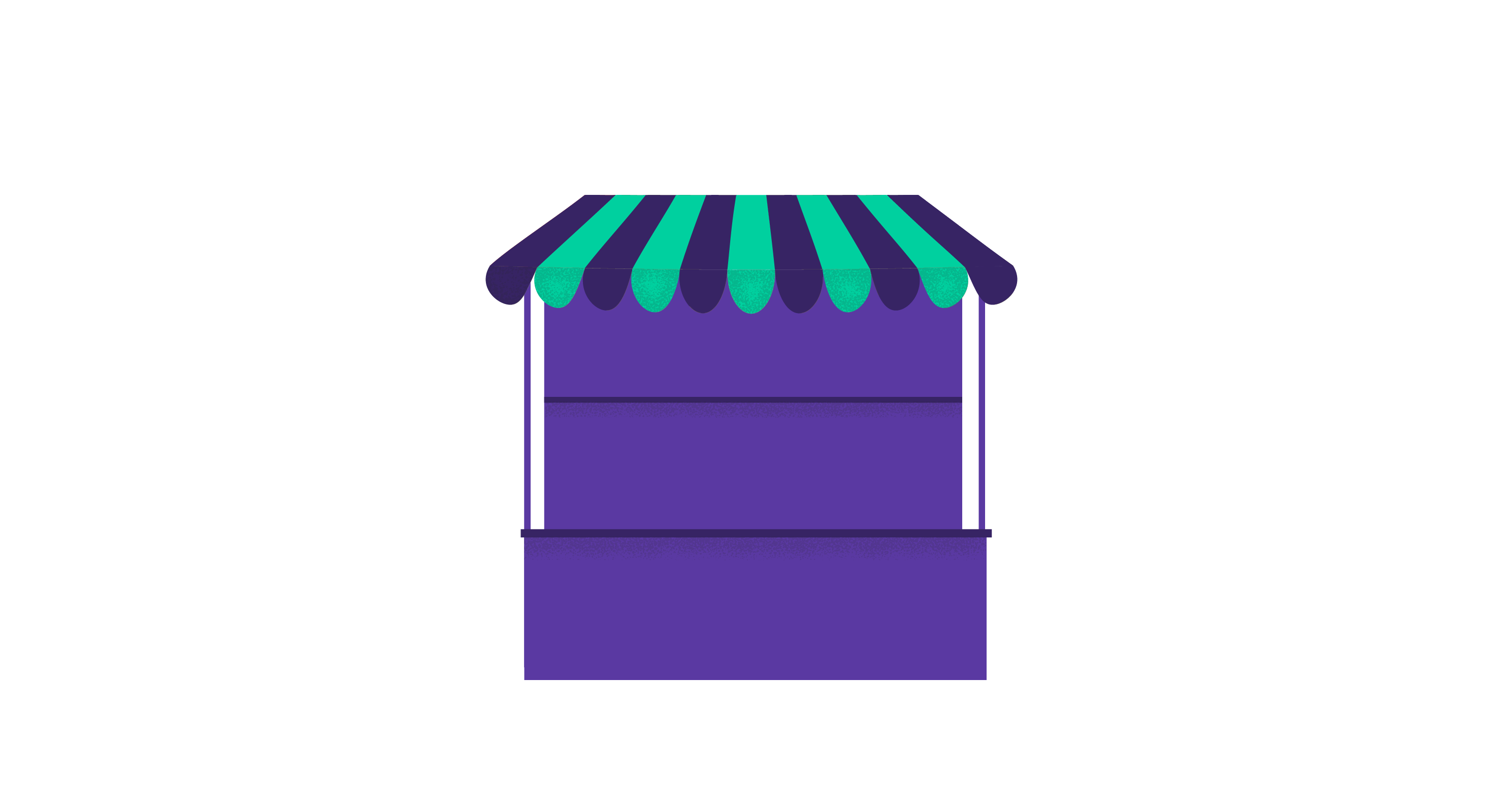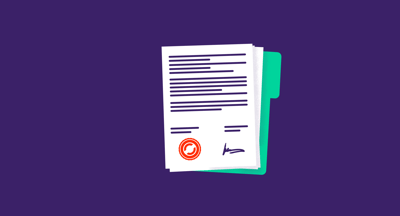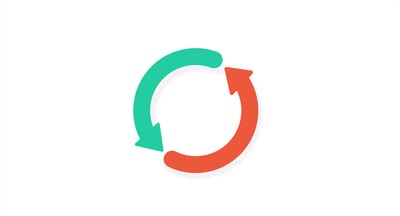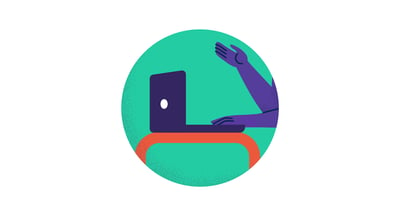February 2, 2024
 by Mara Calvello
by Mara Calvello

 Say yes to effortless savings
Say yes to effortless savings
With G2 Track, evaluate SaaS vendors for cost-effectiveness and improve your budget allocation with ease.
Deciding which software your team uses day in and day out is a big commitment.
It can be hard to sift through the marketing and sales hype around a new SaaS tool. The decision has the potential to make or break your enterprise and the workflow of various teams. Implementing the wrong software or even deploying good software the wrong way can set your employees up for failure before they even get started.
As you select software vendors, it needs to be a good fit for both parties involved. To determine this, you need to conduct a software vendor evaluation.
When you take a look at your business processes, does the software you’re using match up, or is there room for improvement? Regardless of your industry, your software vendor evaluation strategy should weigh all possible factors that make long-term ROI a priority. Discover more about ways to get started and how G2 Track can help.
More often than not, you should be accessing vendors during the vendor selection process, meaning before you buy their product or sign a software contract. This way, when looking at different vendors, you can make the most informed decision for your team and their needs.
Whether you’re the CEO or a project owner, a lot is at stake when making this choice.
During the decision-making process, some important and helpful questions you can ask include:
It’s all part of your due diligence as you keep in mind the business challenges you’re looking to solve by implementing this software solution into your tech stack.
When starting the vendor selection process, it's important to set a vendor evaluation criteria checklist in place. Here are some key criteria and recommendations to keep in mind:
In your evaluation of software vendors and other technology partners, look into their background and history. Find out how long they’ve been in business and if they’re currently growing or downsizing. Is their customer service team big enough to handle your potential questions and concerns? Do they have an engineering team that can focus on product development if you sign on for the long haul?
Also, check for their credibility within various industries and if they have any applicable certificates that could work to your advantage.
Once you have an understanding of your project scope, look at the vendor's pricing model to choose one that fits your goals the best. Pricing models can either be fixed, with defined prices and strict deadlines, or flexible depending on the time and material needed.
You can also analyze their average hourly rates and compare them with other vendors in your region to get the best overview.
When it comes to getting feedback, you can either ask vendors for references in your industry or check their profiles on G2. For instance, if you’re looking for a new ERP or CRM software, see what real clients and customers say about the company in question by reading through reviews. There, you’ll be able to see what they liked and disliked, what problems that specific tool solved, and any recommendations the customers have for the product team.
If you’re speaking to customers directly or communicating via email, be sure to find out how long they’ve been a client of that software vendor and how the vendor specifically addressed their needs during this time.
Depending on the scope of your project, you must decide the size of your team. If your project requires under 500 hours to complete, it's recommended to hire freelancers. However, if it's more complicated and large-scale, you can choose from three types of team sizes: small, medium, and large.
Medium and large-size vendors usually have more internal resources and the ability to scale the team up and down as per your needs.
It's crucial to set up some legal and security practices in place to protect your data and intellectual property. Make sure to evaluate and review with an expert regarding any formal agreements that the vendor creates.
These can include non-disclosure agreements (NDA), IP rights agreements, non-employment agreements, and data privacy clauses. You can also get vendor security and privacy assessment software to understand the cybersecurity risks associated with doing business with third parties.
Before signing on to implement enterprise software, you’ll need to make sure you’re choosing the right software vendor. Follow these steps in the decision-making process so you can be sure you cross your t’s and dot your i’s.
If you’re unaware of exactly what you need, how do you expect the software vendor to know?
When it comes to the software you’re looking to add to your tech stack, know what you want before you start shopping around. Ask your team what sort of features and functionalities would be considered “must-have” and which would be “nice to have”. If your business requirements are leaning toward a replacement for a tool currently in use, find out exactly why your team doesn’t like it or why they find it to be unhelpful.
This will help you narrow down if a specific software tool fits your business and its goals or if you’re just temporarily distracted by the idea of a shiny new solution that actually won’t be helpful in the long run.
At the end of the day, the vendor and its product need to align with your business goals and meet the needs of not only its potential end-users but stakeholders, too.
As you read through your software contract, make sure to keep an eye out for any notion of additional fees or hidden costs that may come up during your time with the vendor.
Additional fees can come in the form of:
It’s also a good idea to watch for any mention of provisions that allow the vendor to increase fees during the course of your contract. You should also see if there are provisions that allow you to negate the contract after a year if the solution isn’t working the way you need it to.
No matter how perfect the partnership between your company and the software vendor is, at some point, you’ll likely end up parting ways.
When that day comes, even your most trusted vendor could try to pull an unprofessional tactic, like holding your data hostage or charging an extreme amount of money to get you to stay on as a customer. Before signing, ask the vendor what will happen with your data if you were to leave and how you would be able to get it back.
Expect to have to pay something, especially if your data is encrypted. But regardless of the price, getting your data back is crucial.
You wouldn’t buy a car without taking it for a test drive first, right?
The same can be said for a software solution. Before you commit to new software, ask the vendor if they offer a free trial so you and your team can test out the features, useability, and benefits. During this trial period, be sure to spend enough time using the tool to know if it offers the features and functions you need.
This is also when you should compile a list of any questions you’d like to ask the vendor about the product, so you can be sure it’s a perfect fit for your business and its needs before signing on the dotted line.
When thinking about how your team will use the software in question, establish a shortlist of key performance indicators (KPIs) that will determine whether or not the software implementation will be a success.
Will success be a certain number of new customers the software helps you retain? What about growth in metrics like website traffic or click-through rate? Or will it depend on the number of sales closed from new customers?
Whatever the case may be, when you put these KPIs front and center, both your team and the software vendor will know what needs to take place to make using the software worthwhile and a success, which will only improve the customer relationship in the long run.
After collecting the necessary data, the next step is to compare the vendors. You can use a vendor scorecard, which consists of a set of criteria that are relevant to the goods or services they provide. It will allow you to systematically evaluate different aspects of a vendor's performance and make informed decisions about building vendor relationships.
A vendor evaluation scorecard can look something like this:
| 5 | Very good; exceeds expectations |
| 4 | Good; meets expectations |
| 3 | Standard; meets most expectations |
| 2 | Adequate; meets some expectations |
| 1 | Unsatisfactory; misses most expectations |
| 0 | Substandard; meets no expectations |
Pro tip: You can also download pre-built software vendor evaluation templates that offer a scorecard and other criteria to streamline the vendor selection process.
There are three main ways that a SaaS system of record like G2 Track can help you with your software vendor evaluation journey.
First up is by outlining where you have overlapping functionality within your tech stack. One of the ways that G2 Track is unique is that it can show you a list of every single software solution that your team is using and if there is the same or similar functionality in these tools.
Because it’s synced with the G2 marketplace, where every software vendor has to choose a main category, G2 Track can detect if you're using a specific software tool that you should consolidate or completely move away from. If there are, you can make the appropriate moves to free up your stack and start using an application with more benefits to your team.
Secondly, G2 Track is able to showcase user sentiment data, which allows you to see if it’s time to find a new software solution and start the software vendor evaluation process. Once you send out employee pulse surveys asking your teammates to share exactly how they feel about each application, this data will be presented in a grid with four quadrants.
These quadrants include:
is the amount of potential savings businesses will experience when going from a one-year to a multi-year contract.
Source: G2 Track Data
Finally, we have the insights that G2 Track puts front and center. Not only are you able to see how much a contract is for and how much is being spent, but you also have a list of the top 10 alternatives of that software application. Plus, with insights from the marketplace, you’ll be able to see the perceived cost of every single application your team uses.
This data changes daily, so you see how the cost of the application is perceived by its users. Is the price worth the amount of use your team gets from it?
At the end of the day, the relationship you have with your software vendor is important. There has to be clear communication and trust on both sides of the contract. Your company spent a lot of effort defining its goals and values, so it’s important that you don’t rush the evaluation process and choose an application that supports both.
Looking for new ways to save money? Request a demo now to learn how G2 Track can optimize your tech stack for big savings!
Mara Calvello is a Content and Communications Manager at G2. She received her Bachelor of Arts degree from Elmhurst College (now Elmhurst University). Mara writes content highlighting G2 newsroom events and customer marketing case studies, while also focusing on social media and communications for G2. She previously wrote content to support our G2 Tea newsletter, as well as categories on artificial intelligence, natural language understanding (NLU), AI code generation, synthetic data, and more. In her spare time, she's out exploring with her rescue dog Zeke or enjoying a good book.
 Say yes to effortless savings
Say yes to effortless savings
With G2 Track, evaluate SaaS vendors for cost-effectiveness and improve your budget allocation with ease.
Contract negotiations are like salsa, it takes two to tango.
 by Mara Calvello
by Mara Calvello
The end of a fiscal year calls for software renewal.
 by Mary Clare Novak
by Mary Clare Novak
Maintaining a lean SaaS stack is no easy feat for IT managers, especially with the...
 by Mara Calvello
by Mara Calvello
Contract negotiations are like salsa, it takes two to tango.
 by Mara Calvello
by Mara Calvello
The end of a fiscal year calls for software renewal.
 by Mary Clare Novak
by Mary Clare Novak


